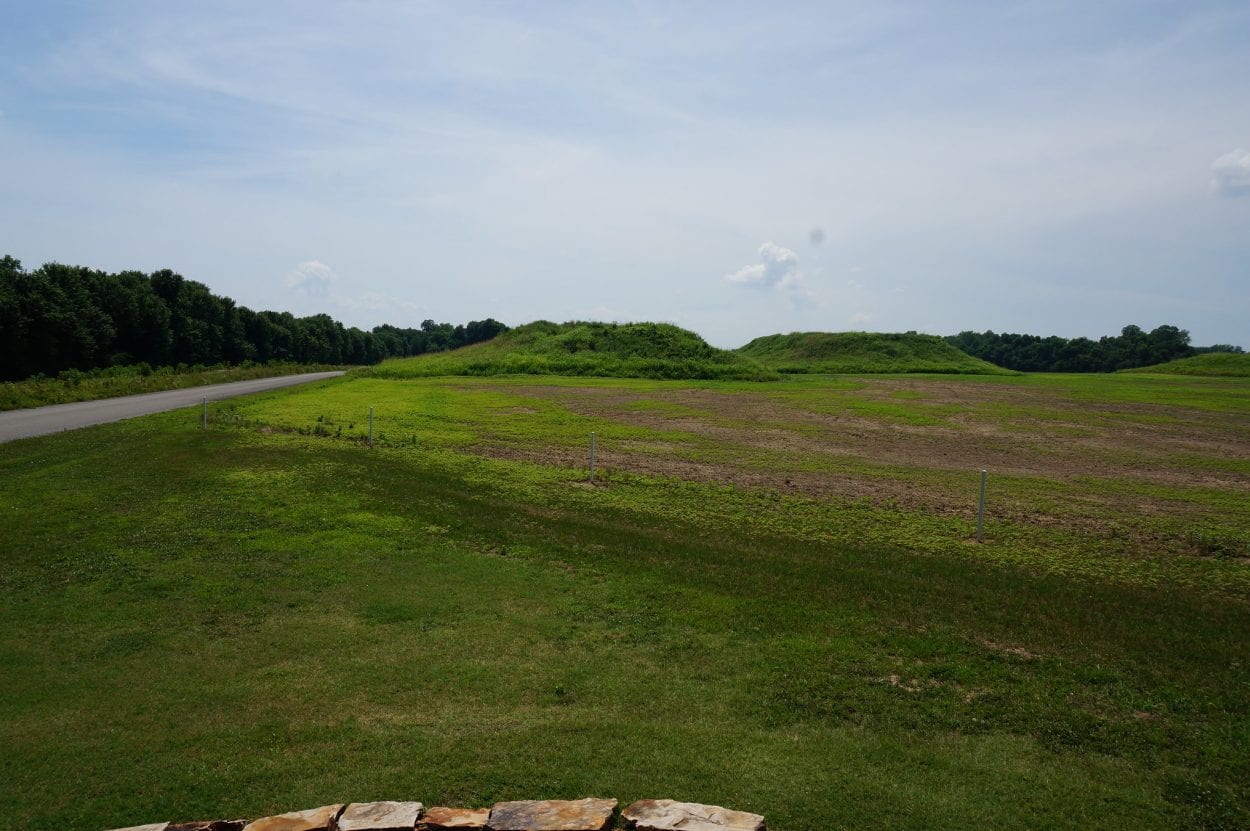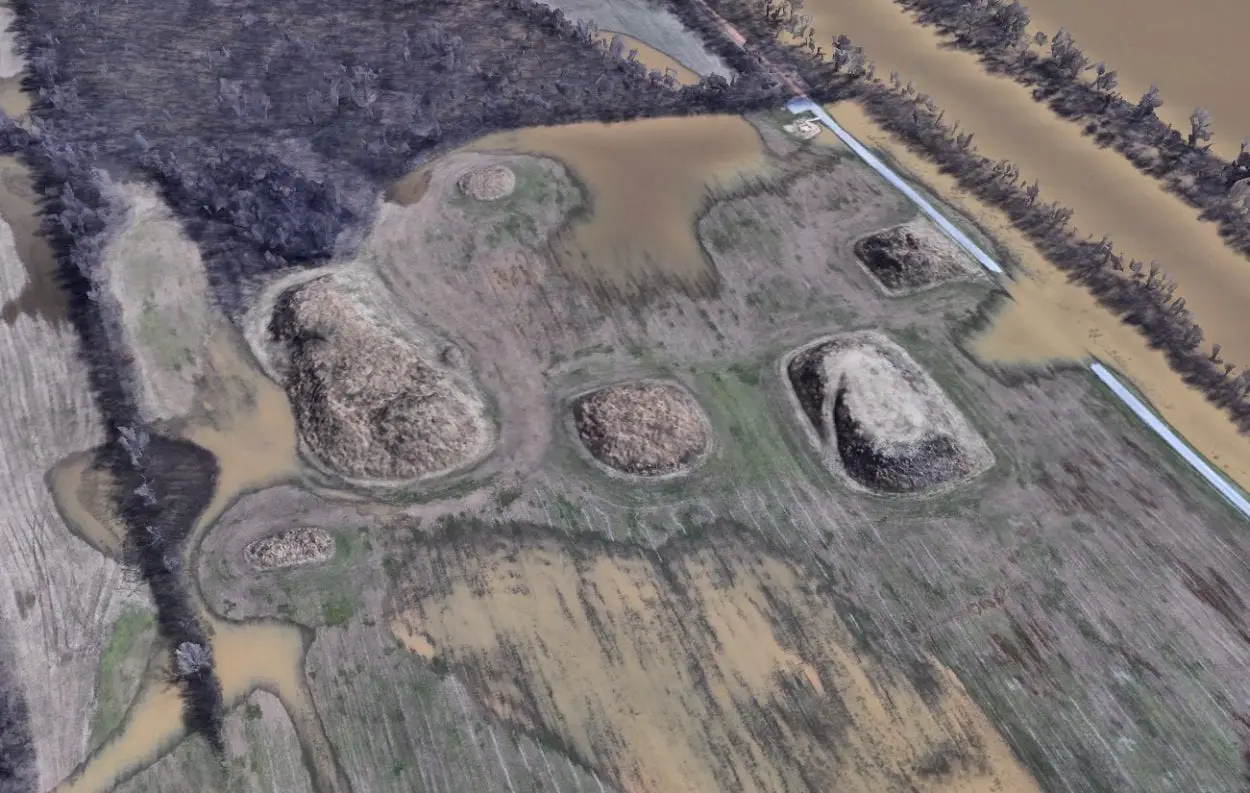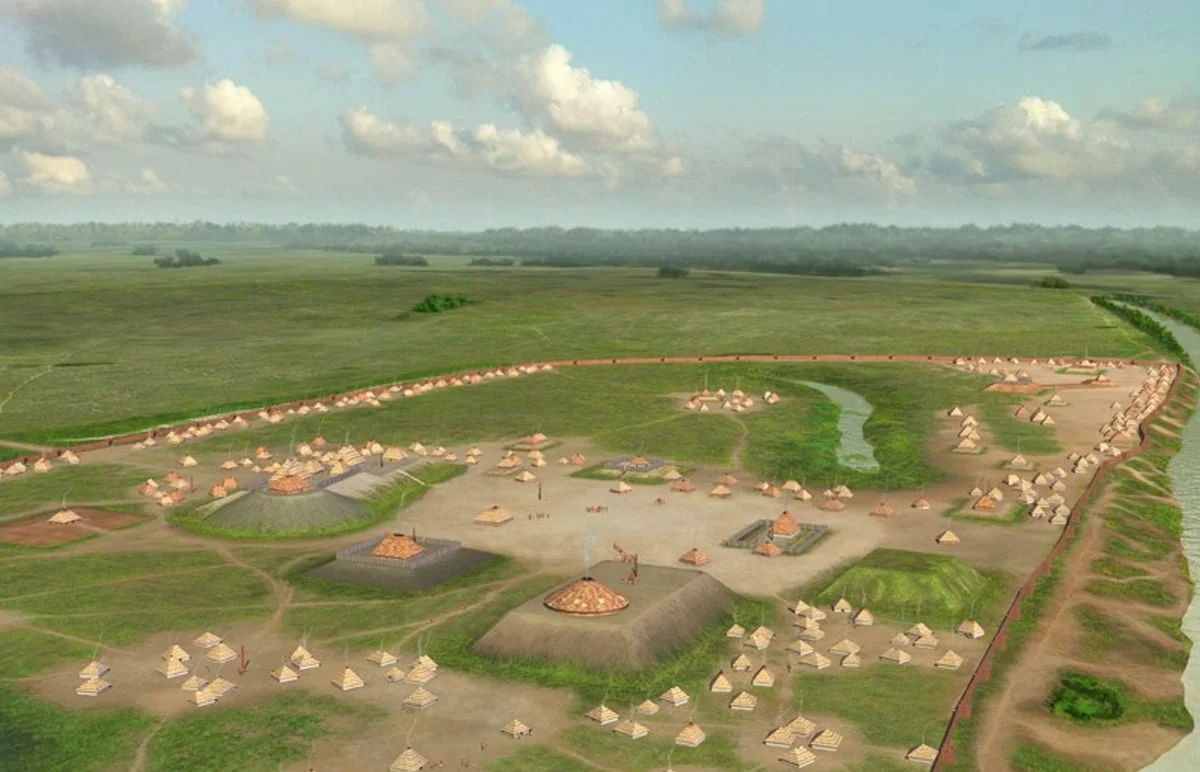The Kincaid Mounds is an ancient tribal centre of the Mississippian culture that built a large settlement comprising of raised mounds, in the present-day state of Illinois near the banks of the Ohio River, in the United States.
The Mississippian culture was a Native American civilisation that emerged around AD 800 in the Mid-western, Eastern, and South-eastern regions of America. The civilisation was composed of a series of urban settlements linked together by loose trading networks, with the most notable site being the city of Cahokia in southern Illinois.
The area around the Kincaid Mounds was first occupied during the Archaic Period around 8000 to 2000 BC, where the region was probably inhabited by cultures of the Early Woodland.
The founding of Kincaid is speculated, but excavations by archaeologists suggest that the site was established around AD 800, although some sources suggest AD 1050.

Kincaid likely served as a trade link between native settlements in the Cumberland-Tennessee river valleys, and the metropolis at Cahokia, in which influences of Cahokian culture is evident in the Kincaid shell-tempered ceramics.
The society revolved around a complex chiefdom structure, led by a male chief and his family who exerted civil control over the community, and priests who held religious authority.
The major construction phase took place in what is known as Kincaid’s Middle Component (also called the Classic Mississippian period), in which 19 mound monuments was constructed, with 11 being identified as substructure platform mounds, in addition to a large plaza situated near the nucleus of the settlement.
Numerous mounds contained temples or ceremonial structures, with some also being associated to community places of gathering, administrative or civic structures, or domestic dwellings.

The entire site was surrounded by a large palisade wall of upright logs or posts, with a series of “guard houses” or bastions at intervals of about 100 feet. The palisade may have served a defensive purpose, but it has also been suggested that it functioned to mark the boundary of the ceremonial site and seat of the chiefdom’s authority.
The Mississippian culture occupation at the site appears to have ended by AD 1400–1450, possibly due to the exhaustion of local resources such as timber and game, a period in which archaeologists call the “vacant quarter”.

Header Image Credit : Herb Roe – CC BY-SA 4.0





